Pamukkale, which is included in almost all the lists of places that must be seen before death and visited by around 2 million tourists every year, is one of the places where nature plays the role of an artist. The discovery of the attractiveness of Pamukkale, where the white travertines formed as a result of the contact of the thermal waters with the air, form gradual shapes like a frozen waterfall and sometimes create terrace-shaped pools, goes back to the Roman Period.
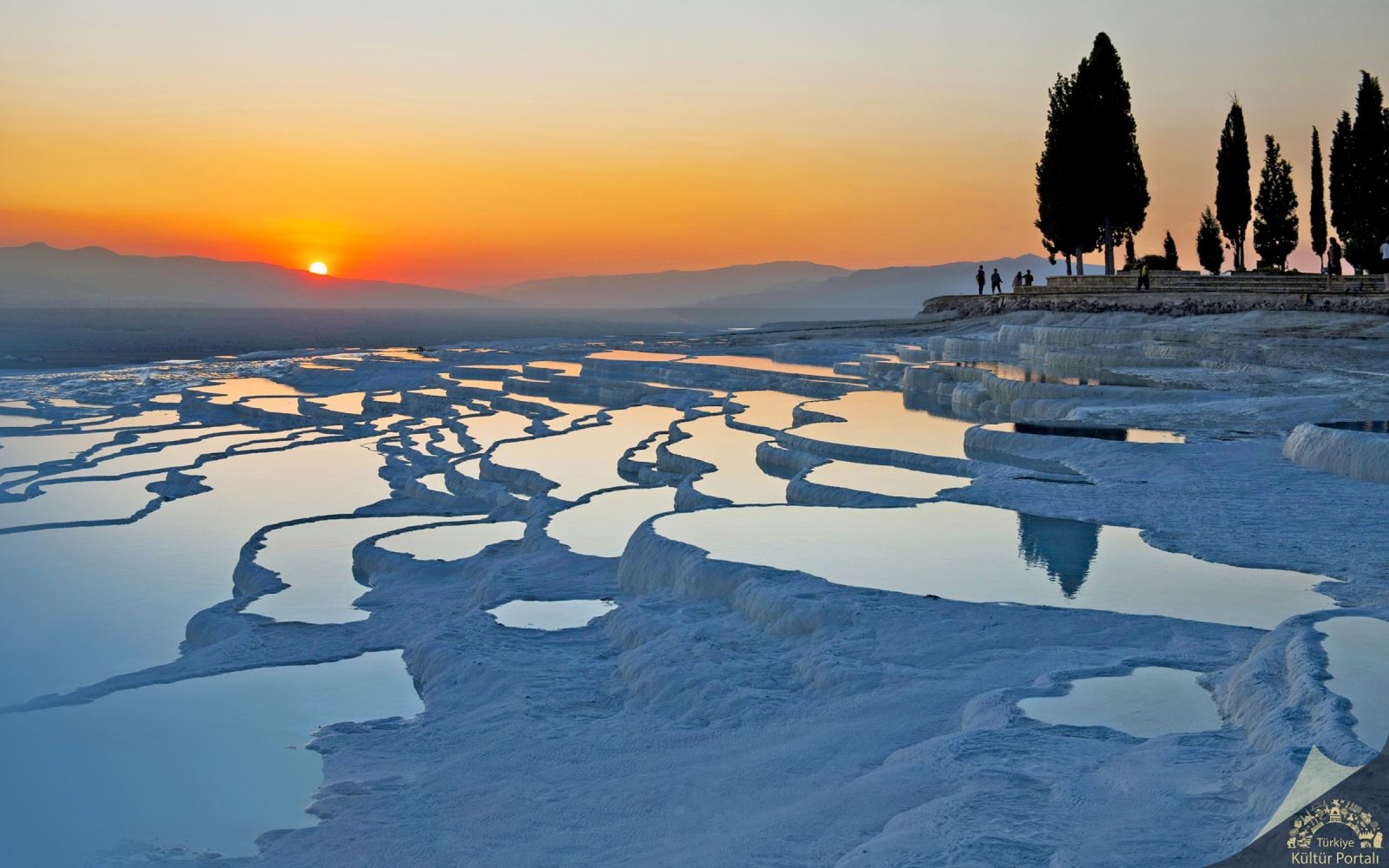
Pamukkale Hierapolis Ancient City – Denizli
Most of the ruins of Pamukkale Hierapolis Ancient City, standing in all its glory right next to Pamukkale Travertines, are from this period. Together with the uniquely beautiful travertines, these ruins are on the UNESCO World Cultural and Natural Heritage List.
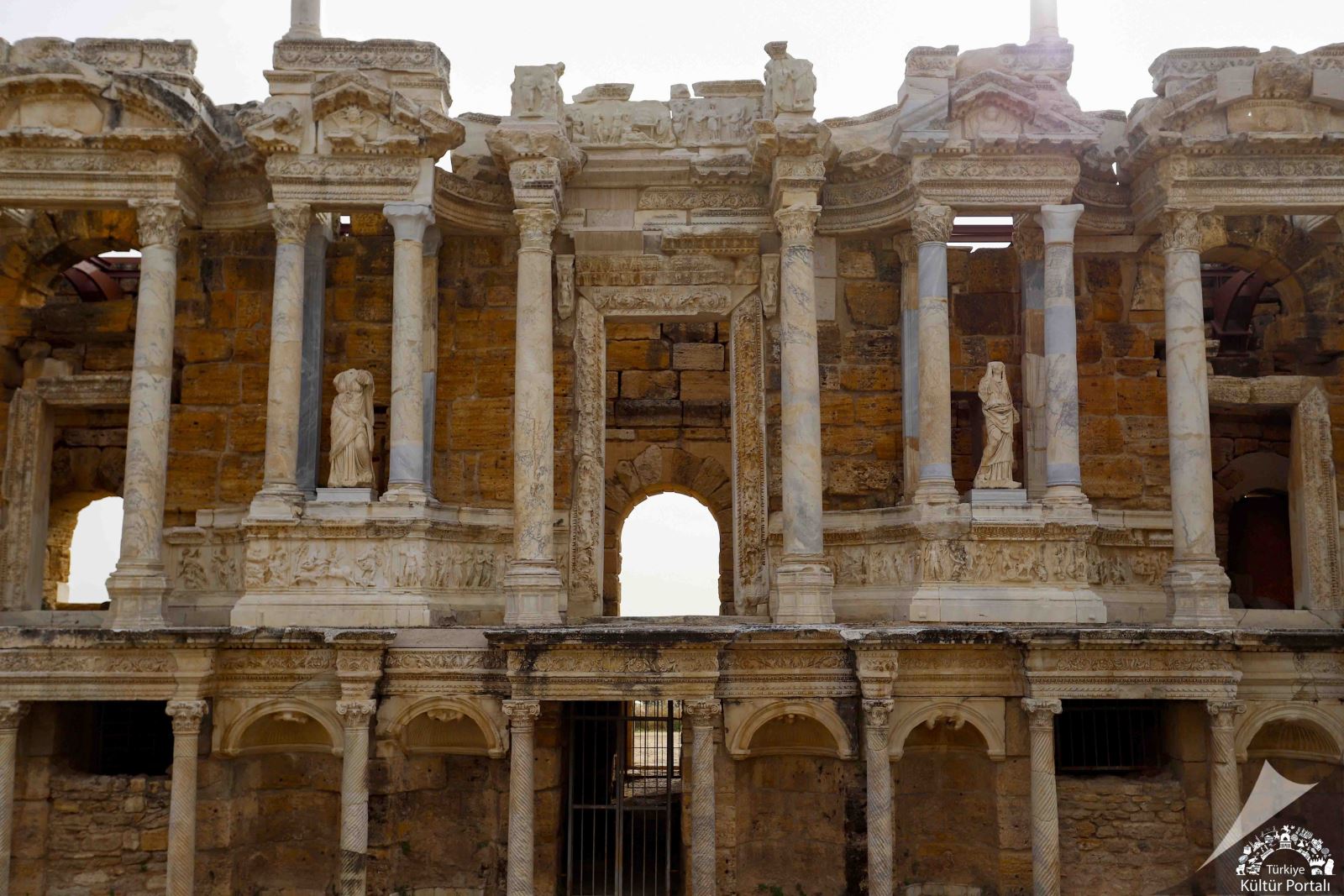
Pamukkale Hierapolis Ancient City – Denizli
We are sure that Pamukkale will fascinate you at first sight. Two thousand years ago, the Kingdom of Pergamon could not resist this attraction and built the city of Hierapolis next to the travertines. During this period, Hierapolis served as a thermal health center and its sources believed to be healing were visited by people from different parts of Anatolia seeking health and beauty for thousands of years. Today, thermal pools continue to be visited in search of beauty and health. You can enter the waters where the people of the ancient world used to swim thousands of years ago and watch the magnificent view of the travertines. However, this natural beauty, which took thousands of years to form, is quite sensitive. Therefore, only certain parts of it can be walked around and its waters can be entered. Those who want to stay longer in Pamukkale and benefit from its healing waters can both stay in the thermal facilities located near the ancient city and travertines and enjoy massage, thermal waters and mud baths.

Pamukkale Hierapolis Ancient City – Denizli
The ancient city of Hierapolis has managed to reach the present day by being very well preserved. The Roman Bath, which we can definitely say that it was visited very often when it was a thermal center, is used as an archeology museum today. Here you can see the statues and other ruins unearthed in the ancient city excavations in Hierapolis and its surroundings. Buildings such as the ancient theatre, temples, monumental fountains, tombs, agora and gymnasium are in such a good condition that you feel like you are in the city of 2,000 years ago. In particular, the stories told about Ploutonium, which was believed to be the entrance to hell in the Roman Period, will attract your attention.
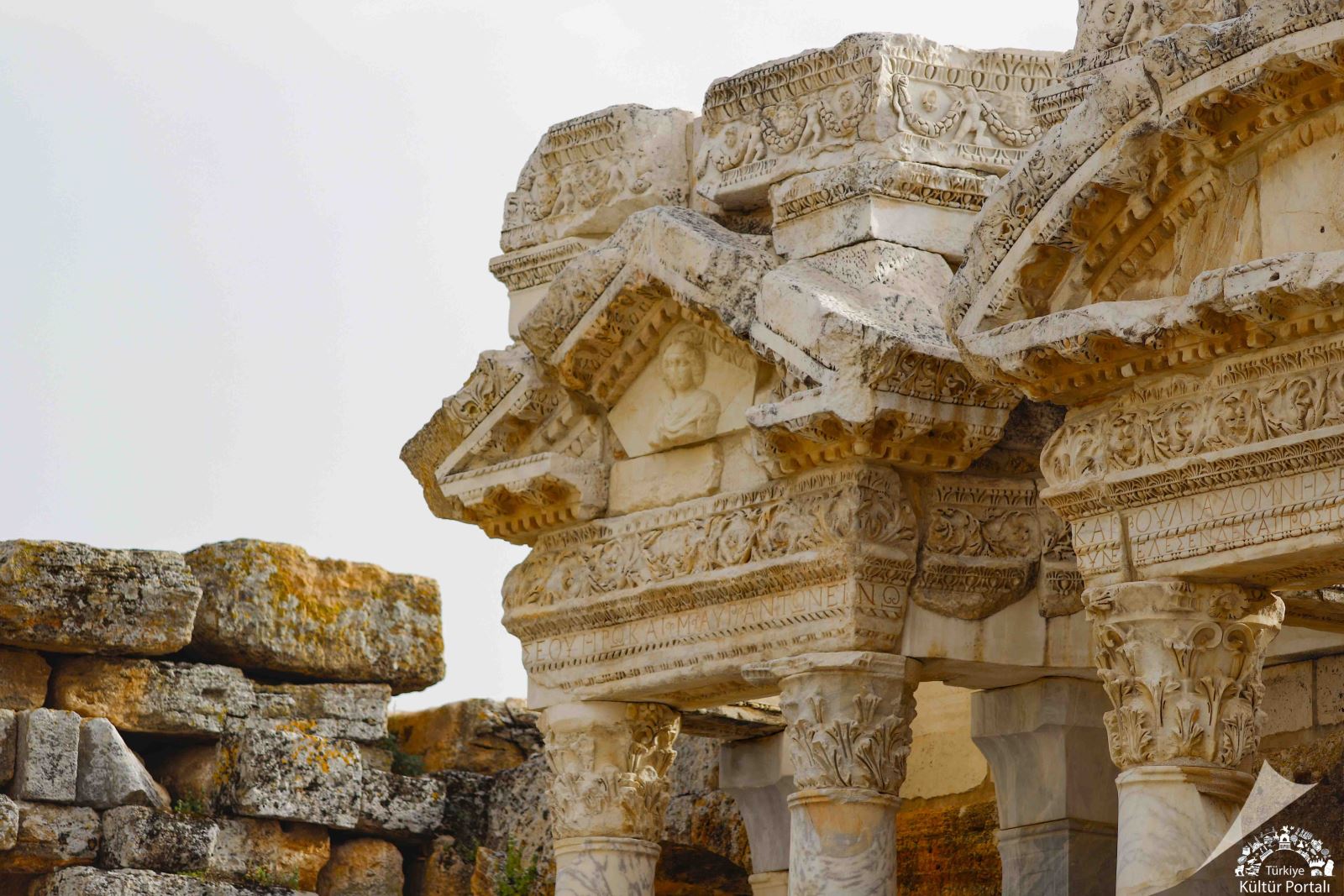
Pamukkale Hierapolis Ancient City – Denizli
Hierapolis is also a holy settlement in terms of Christianity. The most important reason for this sanctity is that Phillippus, one of the 12 apostles of Jesus, was killed here and his grave is here. Martyrium, which was built by palace architects in the 5th century and where the saint’s tomb is located, is one of the sacred structures of Christianity. Other important Christian structures are the 6th century cathedral, which includes the baptismal vessel and the bishop’s liturgy, and the Direkli Church, which dates to the 7th century. Many smaller churches are also scattered throughout the city. All these structures prove that Hierapolis was an important religious center during the Byzantine Period.
Where is Hierapolis Ancient City?
The ancient city of Hierapolis, located 17 kilometers north of Denizli, is called “Holy City” in the archaeological literature, due to the presence of many temples and other religious structures known in the city. It is debated in which old geographical region the city is located.
With its geographical location, Hierapolis is among the various historical regions surrounding it. The ancient geographers Strabo and Ptolemaios claimed that Hierapolis was a Phrygian city with its proximity to the cities of Laodikeia and Tripolis, which border the Caria region. There is no information about the name of the city before the Hellenistic Period in ancient sources. It is known because of the cult of the Mother Goddess that there was a life in the city before it was called Hierapolis. Although the information about the establishment of the city is limited; King of Pergamum II. By Eumenes II. YY. It is known that it was founded in the beginning of the year and took the name Hierapolis because of Hiera, the queen of the Amazons, the wife of Telephos, the legendary founder of Pergamum.
Hierapolis maintained its original texture by adhering to Hellenistic urbanization principles until the great earthquake in the reign of Roman Emperor Nero (60 AD). The city, which is located on the earthquake belt, suffered great damage from the Nero period earthquake and was completely renovated. After these earthquakes, the city lost all its Hellenistic character and took the appearance of a typical Roman city.
Hierapolis became a very important center during the Byzantine period after the Roman period. This importance, MS IV. Being the center of Christianity (metropolis) since the century AD, in 80 years, Hz. It is due to the death of Saint Philip, one of the apostles of Jesus, here. Hierapolis, XII. Towards the end of the century, it passed into the hands of the Turks.
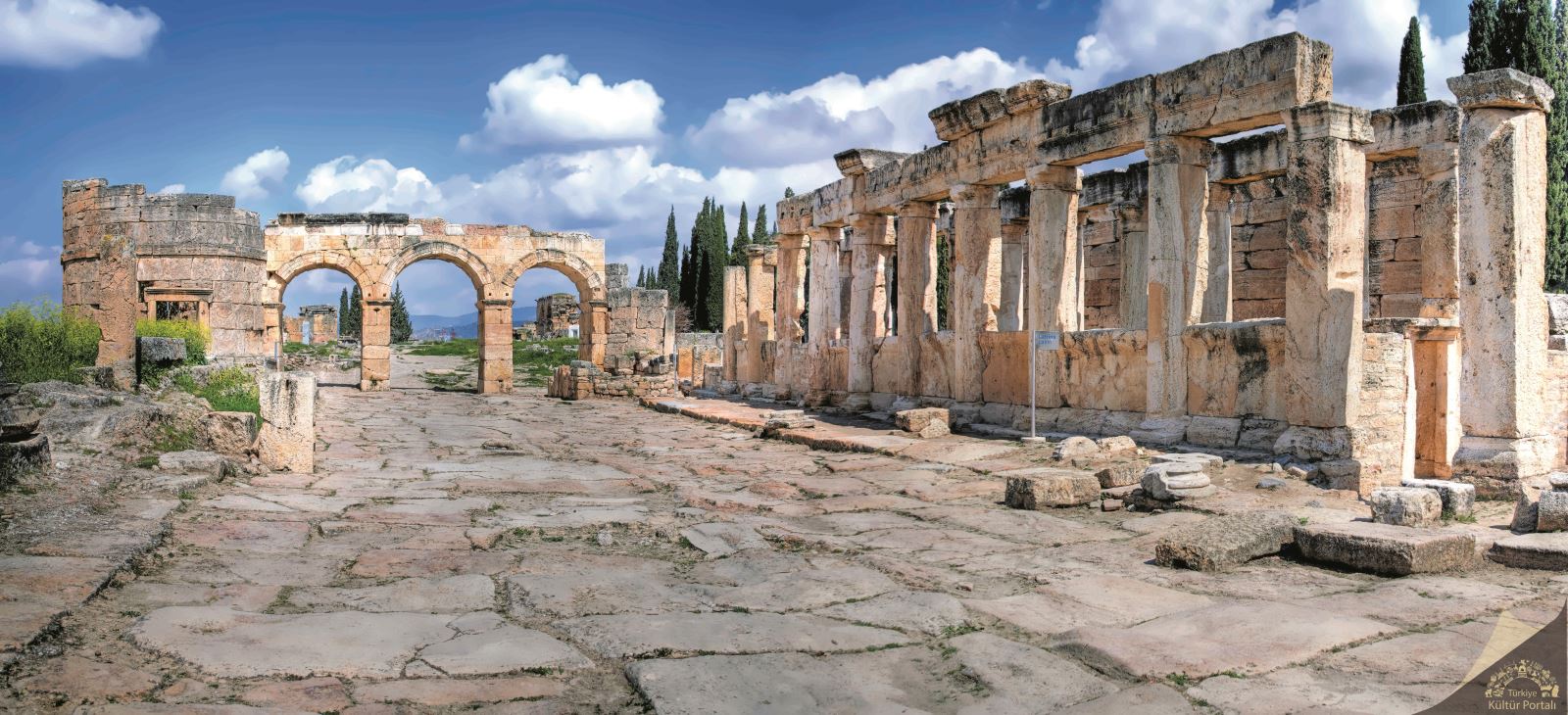
Pamukkale Hierapolis Ancient City – Denizli
Parts of the Ancient City of Hierapolis
Hierapolis Theatre: The great structure was built on four islands. The perpendicular cavea is divided into two parts by the diazoma, 9 cuneusa Summa cavea gallery and 8 steps are placed vertically. The stage building has a logeion and a large backstage and is connected to the stage. The three orders of the skene frons are seated on the podium by marble monolith columns, with a decorated cornice dedicated to Apollo and Artemis. This magnificent structure was built during the reign of Emperor Septimius Severus AD III. It was built in the 16th century, by engulfing and destroying the previous phase (the Flavian Period). It was used until the Late Roman Period, and it is understood from the inscription on the underside of the architrave, dated to AD 352, that the skene frons was repaired.
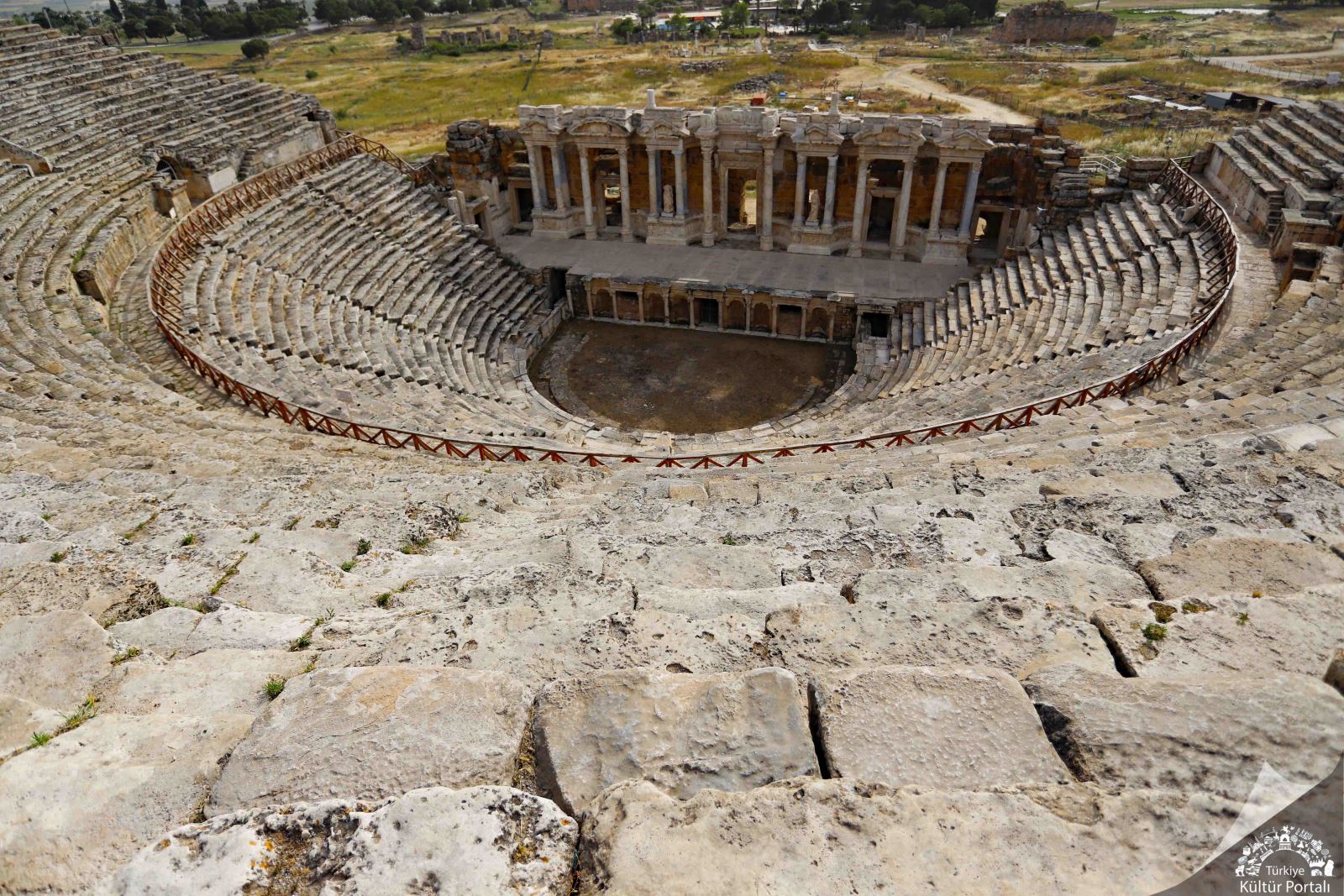
Pamukkale Hierapolis Ancient City – Denizli
The Great Bath Complex: There are traces of the interior of the building, whose massive walls and some vaults have survived, were covered with marble. The plan of the bath is like other typical Roman baths. First, there is a large courtyard at the entrance, a closed rectangular area with large halls on both sides, and then the main bath structure. In the side wings of the palaestra, two large halls, one in the south and the other in the north, were reserved for the emperor and ceremonies. Remains of the bath complex AD. II. It is dated to the century. The vaulted closed spaces adjacent to the large hall are used as museums today.
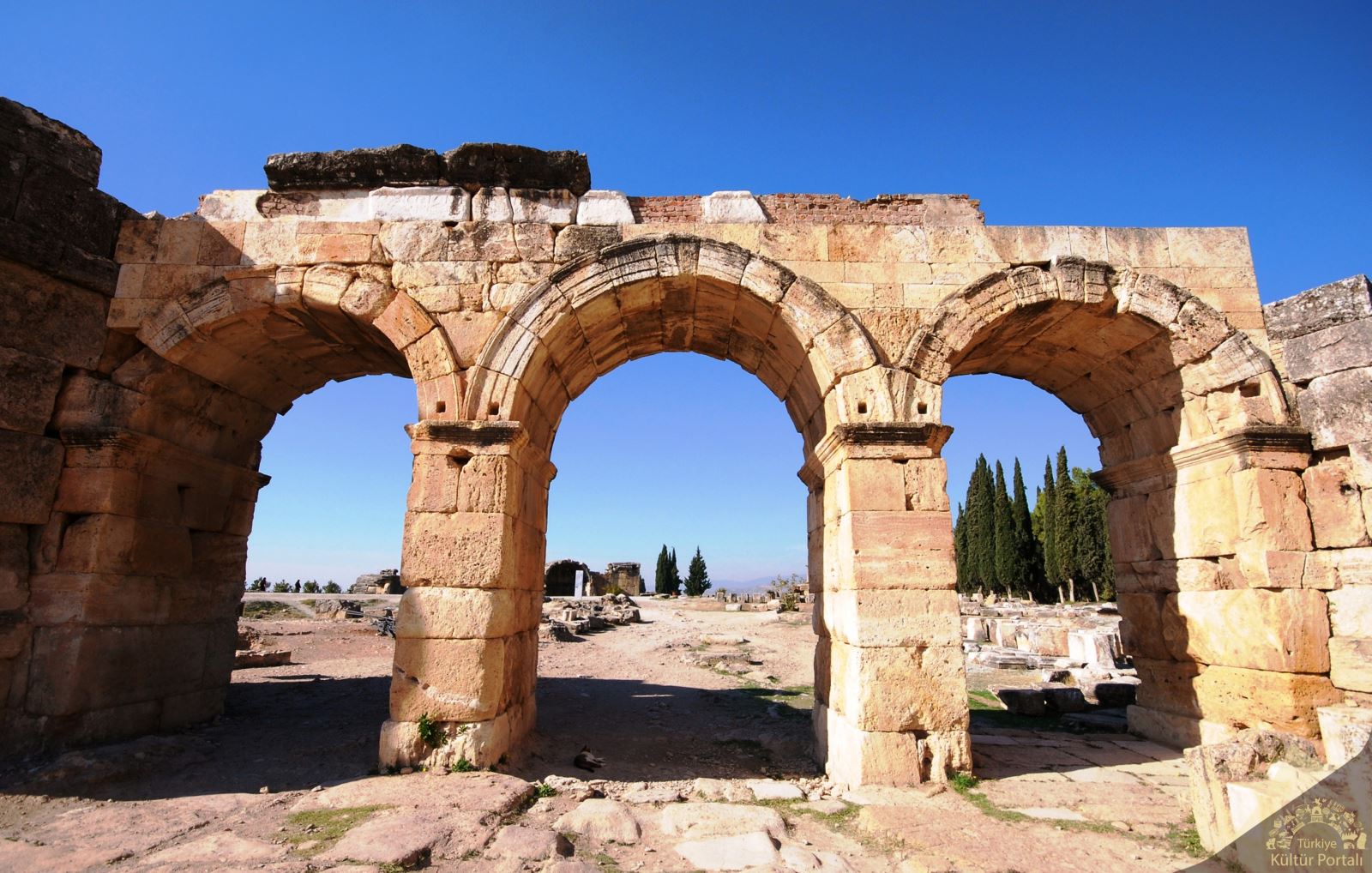
Pamukkale Hierapolis Ancient City – Denizli
Frontinus Street: Due to its architectural features, this 14-meter-wide street (plateia), which is thought to have been built together with the gate, constitutes the main street of the city.
Agora: After the earthquake in 60 AD, it was arranged as the Hierapolis Commercial Agora as a result of a large area change between Frontinus Street and the slopes of the eastern hill.
Northern Byzantine Gate: The northern gate, which was included in the fortification system built in the city of Hierapolis, was built in IV. It is dated to the end of the century.
Southern Byzantine Gate: AD IV. It was built in the century. It was built with travertine blocks and spolia material containing marble.
Gymnasium: A piece of architrave with inscriptions on the column indicates that the building is a gymnasium.
Triton Fountain Building: Tritonlu Fountain Building is one of the two great monumental buildings in the city, together with the fountain building near the Temple of Apollo.
Ionic Column Headed House: The house is located on a secondary long road leading to the theatre. Original structure AD II. century is dated.
Latrina: This structure, which was destroyed in the earthquake, has reached today with all its parts in ruins. At the bottom of the long space, there is a canal that carries the sewage water to the sewer in the street. There is a bench with holes on it, built for sitting along the inner wall, a clean water canal was built for sanitary needs in front of the canal carrying the sewage.
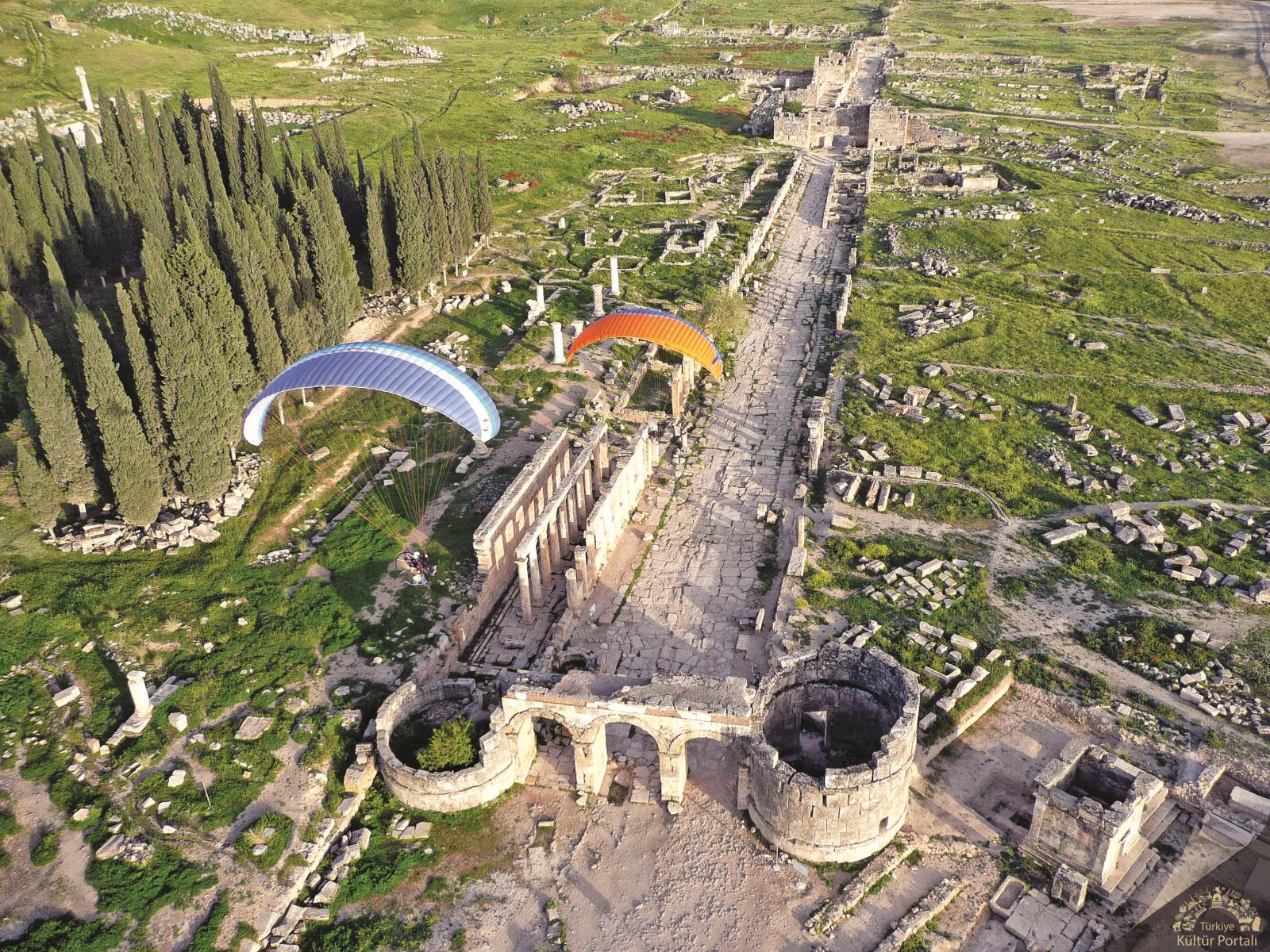
Pamukkale Hierapolis Ancient City – Denizli
Apollon Sanctuary: The monumental building is dedicated to the most important god of Hierapolis. The structure in the inner part, which is pointed out on the podium, was previously defined as a temple, but as a result of the studies carried out later, it was understood that it was a center of prophecy.
Water Canals and Nympheums: Two aqueducts, consisting of canals built on the surrounding hills, provide drinking water to the city.
Plutonium: The entrance to Plutonium is on the right side of the temple.
Walls: In the 5th century AD, as in other cities of the Roman Empire, Hierapolis was also built in AD. According to a law enacted in 396, it was surrounded by walls in the north, south and east directions.
Cathedral: It is one of the most important Christian cult structures of the Ancient City of Hierapolis. The structure opens onto the plateia with the narthex and atrium. The baptismal place is entered through the door on the right, the rectangular planned apse space is divided into 3 naves by columns, in the apse section there is a round baptismal vessel with marble coating plate and stairs on both sides. The entablature was carried by the second row of columns belonging to the women’s section. The apse has a rounded inside and polygonal plan outside. Inside the main apse, there is a concentric staircase, the synthronon, where the priests and the bishop sit during the ritual. The building plan gives us medieval repairs and İ.S. VI. It allows us to date it to the first half of the century.
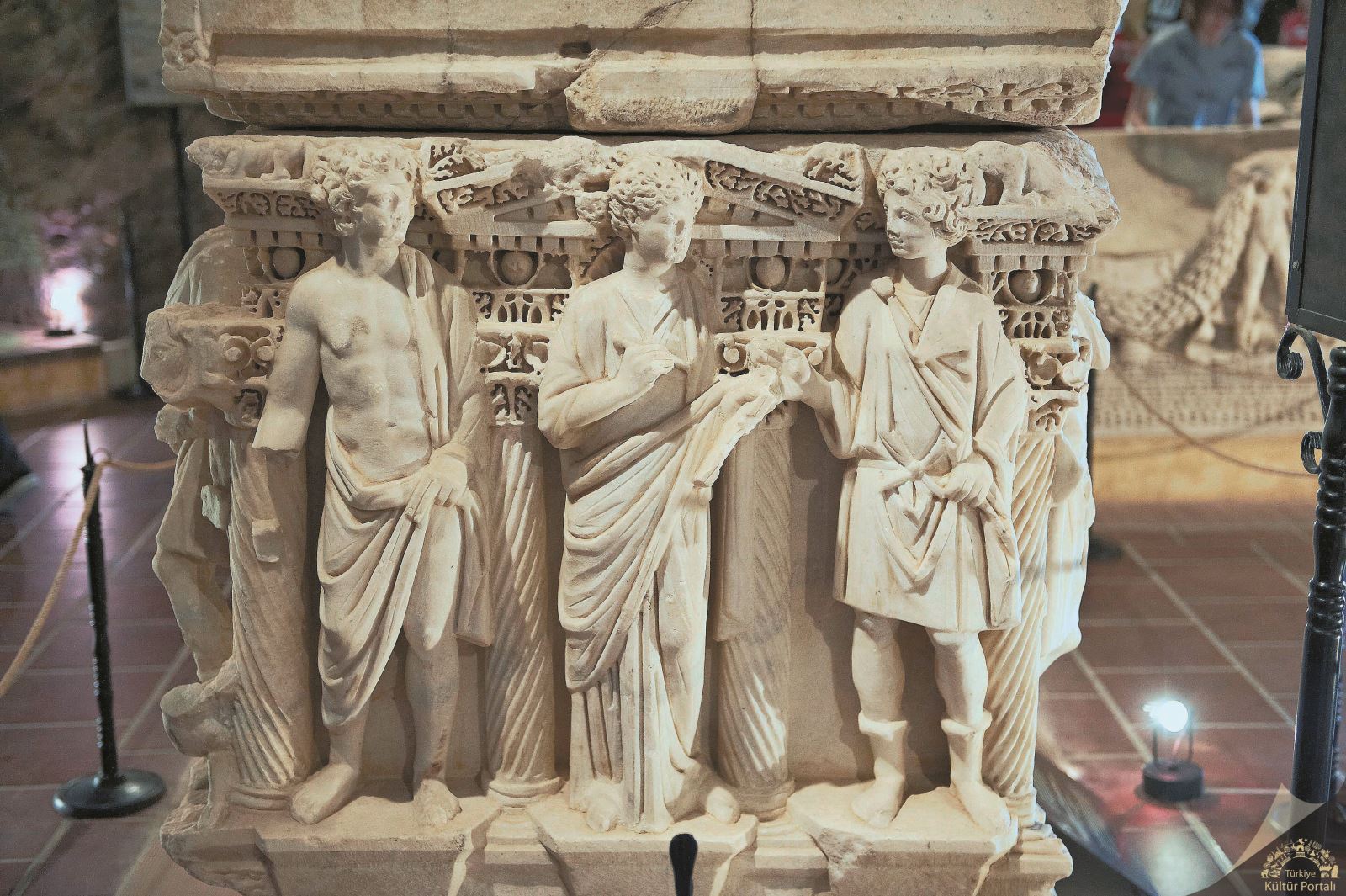
Pamukkale Hierapolis Ancient City – Denizli
Martrium of St. Philippus: In addition to being seen as a source of healing with the unique thermal waters of the Ancient City of Hierapolis, it was considered a holy city both in Pagan periods and Christianity periods. The reason for this is the Prophet who came to Hierapolis to spread Christianity in 80 AD. One of the 12 apostles of Jesus, St. Philippus, was killed by crucifixion here. After Christianity became the official religion in the 4th century AD, a martyrdom was built in the place where he was killed in the name of St. Plilippus. The building, which was built as a religious and spiritual treatment center, has an octagonal plan. There is also the tomb of St. Philippus in the marble covered area in the middle. This center, which is outside the Byzantine period wall, can be reached by wide and long stairs. On the right of the stairs in the last section approaching the building, there is the Ayazma fountain structure. The top of the octagonal section with a diameter of about 20 meters is covered with a lead-coated dome. There are small chapels for praying in the building. The floor of the octagonal section is marble, the floor of the corridor and connected sections is mosaic with floral motifs, the floor of the rooms is travertine, and the floor of the outer rooms where the public stays is compressed earth. Today, many churches celebrate and hold the feast of St. Philippus.
Source: General Directorate of Promotion, Promotional Publications, Denizli Provincial Directorate of Culture and Tourism
